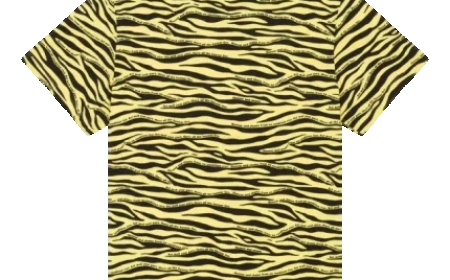The Safest Ingredients to Look for in Cat Food
Discover the safest ingredients in cat food, from high-quality proteins to essential nutrients, and learn how Kwik Pets cat food can support your cat's health.

Choosing the right cat food is paramount to ensuring your feline companion enjoys a long, healthy life. Cats are obligate carnivores, meaning their bodies are designed to thrive on a diet rich in animal-based proteins and fats. Understanding which ingredients are beneficial and which to avoid can guide you in selecting the best nutrition for your cat.
High-Quality Animal Proteins
The cornerstone of any cat's diet should be high-quality animal protein. Look for named protein sources such as:
-
Chicken
-
Turkey
-
Salmon
-
Lamb
-
Beef
These proteins provide essential amino acids necessary for muscle maintenance, energy, and overall health. Organ meats like liver and heart are also excellent additions due to their nutrient density.
Essential Nutrients
1. Taurine
Taurine is an essential amino acid that cats cannot synthesize on their own. A deficiency can lead to serious health issues such as retinal degeneration, heart problems, and reproductive failure. Ensure that the cat food contains adequate levels of taurine, as per the guidelines set by the Association of American Feed Control Officials (AAFCO).
2. Omega Fatty Acids
Omega-3 and omega-6 fatty acids support skin health, coat shine, and reduce inflammation. Sources include fish oil, flaxseed, and chicken fat. These fats are vital for maintaining a healthy immune system and cognitive function.
3. Vitamins and Minerals
A balanced blend of vitamins and minerals is crucial for various bodily functions. Key nutrients include:
-
Vitamin E an antioxidant that supports the immune system.
-
Vitamin B complex important for energy metabolism.
-
Calcium and phosphorus necessary for bone health.
-
Zinc supports skin and coat condition.
These should be included in appropriate proportions to meet your cat's dietary needs.
Digestible Carbohydrates
While cats have limited carbohydrate requirements, some digestible carbs can be beneficial:
-
Sweet potatoes
-
Pumpkin
-
Green peas
-
Chickpeas
These ingredients provide fiber for digestive health and are less likely to cause allergies compared to grains like corn or wheat.
Probiotics and Prebiotics
Incorporating probiotics and prebiotics can enhance gut health:
-
Probiotics live beneficial bacteria that support digestion.
-
Prebiotics non-digestible fibers that feed beneficial gut bacteria.
Ingredients like inulin and chicory root serve as prebiotics, while strains such as Lactobacillus acidophilus are common probiotics.
Ingredients to Avoid
Be cautious of the following ingredients:
-
By-products unspecified animal parts that may be of lower nutritional quality.
-
Artificial additives such as colors, flavors, and preservatives.
-
Fillers like corn, wheat, and soy, which offer little nutritional value and may cause allergies.
-
Excessive carbohydrates high levels can lead to obesity and diabetes.
Recommended Cat Food Brands
When selecting the best cat food, consider reputable brands that prioritize quality ingredients:
-
Natural Balance offers grain-free and limited ingredient diets.
-
Hills Science Diet known for veterinary-formulated nutrition.
-
Blue Buffalo provides high-quality protein sources.
-
Royal Canin specializes in breed-specific and health-targeted formulas.
These brands are available at retailers like Kwik Pets, which offers a variety of options to suit your cat's specific needs.
Frequently Asked Questions
1. What are the safest ingredients to look for in cat food?
Opt for named animal proteins (e.g., chicken, turkey, salmon), omega fatty acids, taurine, digestible carbohydrates (like sweet potatoes), and probiotics. Avoid by-products, artificial additives, and excessive fillers.
2. Is Kwik Pets cat food a good choice?
Kwik Pets offers a selection of quality cat foods, including options from brands like Natural Balance and Earthborn Holistic. It's important to review the specific ingredients and nutritional information to ensure they meet your cat's needs.
3. How can I tell if a cat food is high-quality?
Check for named animal proteins as the first ingredient, a balance of essential nutrients, and the absence of artificial additives and excessive fillers. Also, ensure the food meets AAFCO standards for complete and balanced nutrition.
4. Should I feed my cat dry or wet food?
Both have benefits. Dry food is convenient and can help with dental health, while wet food provides additional moisture, which is beneficial for urinary tract health. Consult your veterinarian to determine the best option for your cat's specific health needs.
5. Can I mix different brands of cat food?
Yes, but introduce new foods gradually to avoid digestive upset. Ensure that all foods are nutritionally complete and appropriate for your cat's life stage and health status.
Conclusion
Selecting the safest and most nutritious cat food involves understanding your cat's dietary needs and carefully reading ingredient labels. Prioritize high-quality animal proteins, essential nutrients like taurine and omega fatty acids, and digestible carbohydrates. Avoid foods with by-products, artificial additives, and excessive fillers. Brands like Natural Balance, Hills Science Diet, and Blue Buffalo offer products that align with these guidelines. Always consult your veterinarian when making significant changes to your cat's diet to ensure their health and well-being.



























